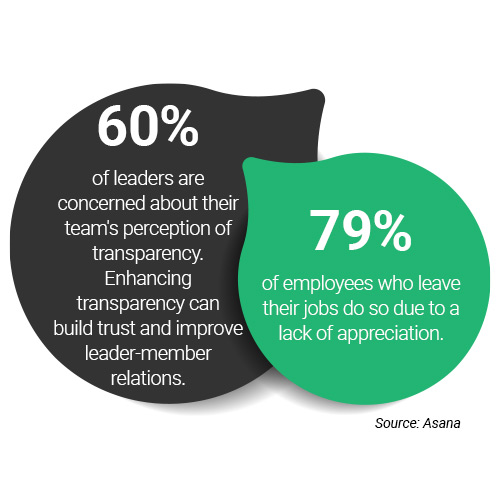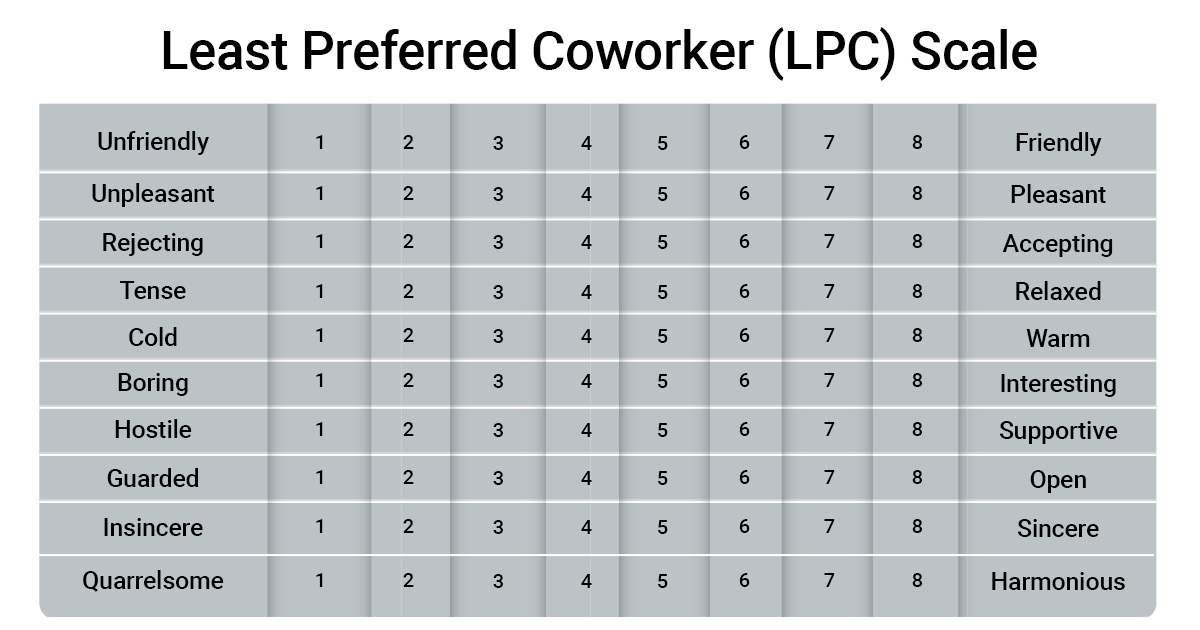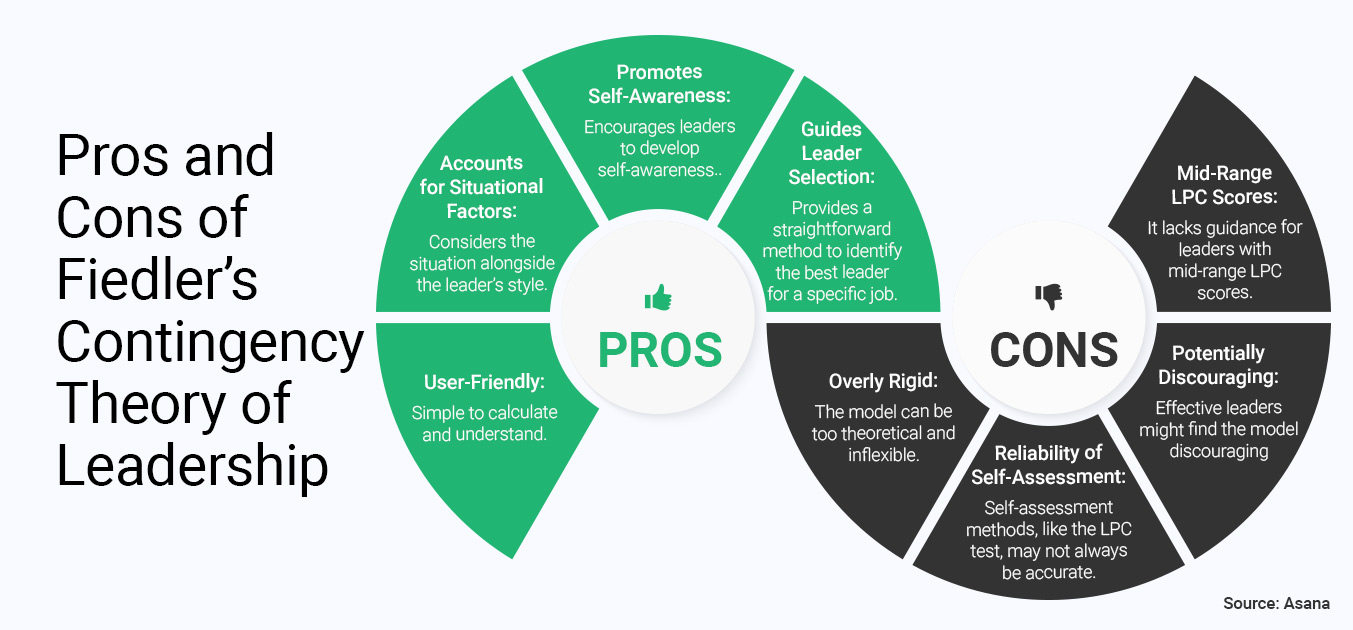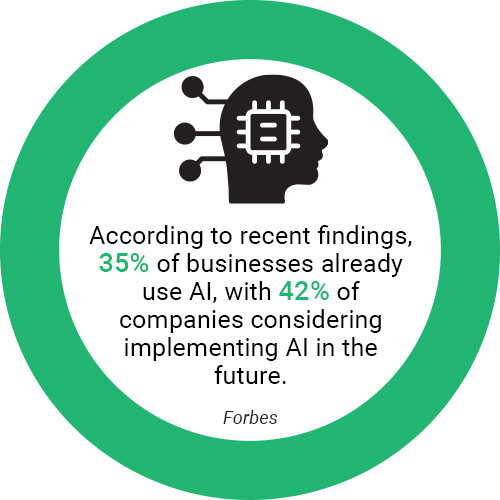
When you think about what it means to be a "good leader," what comes to mind? Do you envision certain skills or traits or perhaps a specific person who embodies leadership in your life? The reality is that the concept of a good leader varies widely. Whether you're leading a small team of two or a large group of 200, you likely employ a range of leadership strategies tailored to the situation, the people you're guiding, the projects you are handling, and the goals you aim to achieve. Did you know that this adaptive approach to leadership has a specific name? It's known as contingency leadership.
The contingency theory of leadership suggests that instead of adapting their style to fit the organization, leaders should align their roles with how well they match the given situation. So, how can you enhance decision-making and adaptability? Artificial intelligence-powered predictive analytics play a critical role here. AI analyzes vast amounts of data to provide insights into the situational factors influencing a project, enabling leaders to adjust their approach more effectively.
In addition, AI's impact on leadership is not just a technological enhancement for increased efficiency. It signifies a profound transformation in how leadership and management are understood and executed. How exactly is AI changing the landscape of leadership? It's streamlining tasks and reshaping decision-making processes, team dynamics, strategy formulation, and human interactions. This demands a strategic approach to integrating AI into leadership practices. How can leaders utilize the power of AI effectively?
This article explores the importance of contingency theory of leadership, ways to apply contingency leadership at work, and how AI is transforming leadership practices.
Understanding the Contingency Theory of Leadership
 The contingency theory in leadership posits that a leader's effectiveness depends on their specific situation. This theory asserts that there is no single best way to lead; instead, the optimal leadership style varies according to the circumstances. A person might excel as a leader in one context while failing in another, highlighting the importance of situational adaptability.
The contingency theory in leadership posits that a leader's effectiveness depends on their specific situation. This theory asserts that there is no single best way to lead; instead, the optimal leadership style varies according to the circumstances. A person might excel as a leader in one context while failing in another, highlighting the importance of situational adaptability.
Contrary to the simplistic notion of labeling leaders as "good" or "bad," the contingency theory emphasizes aligning leadership traits with the right situations. It recognizes that success in any endeavor is often a blend of the leader's qualities and the nature of their challenges. Effective leadership is contingent upon how well a leader adapts to the circumstances.
The pioneer of this theory, Austrian psychologist Fred E. Fiedler, introduced the first contingency model in the 1960s. Fiedler's work laid the foundation for subsequent theories, which expanded on his ideas:
- The situational leadership model, developed by Paul Hersey and Kenneth Blanchard in 1982, emphasizes the need for leaders to adjust their style based on the maturity and competence of their followers.
- The path-goal model, created by Martin Evans and Robert House in 1971, focuses on how leaders can motivate their followers to achieve goals by clarifying the path to success and removing obstacles.
- The decision-making model, formulated by Victor Vroom and Philip Yetton in 1973, provides a framework for leaders to determine the best decision-making process based on the situation.
Each model offers a unique perspective on applying the contingency theory in leadership, presenting different strategies for adapting leadership styles to fit various scenarios. Let’s explore the overarching principles of the contingency theory in leadership.
Critical Components of the Contingency Theory of Leadership
Leadership Styles
The contingency theory of leadership recognizes that the effectiveness of leadership styles varies depending on the situation. For example, a directive style may be suitable when projects or initiatives are unclear and team members are inexperienced. In contrast, a participative style might be better for a team of skilled professionals.
Situational Factors
The theory emphasizes the role of situational factors in determining the best leadership approach. These factors include task nature, structure, team member experience, and the external environment. Influential leaders evaluate these elements to choose the most appropriate style.
Matching Leadership to Situations
The core of this theory is the concept of "fit," meaning that the most effective leadership style depends on the specific requirements of the task or project at hand.
Leader-Member Relations
The quality of relationships between leaders and their team members is crucial. Positive relationships and established trust give leaders more flexibility in their leadership style.
These components illustrate that no single leadership style is effective in all situations. Let’s understand how to effectively implement the theory in your leadership practice and become the best leader for your project team.
How to Apply Fiedler’s Contingency Theory of Leadership
Step 1: Determine Your Leadership Style
Use the LPC (Least Preferred Coworker) scale to identify your natural leadership style. Think of the person you least enjoy working with and use the chart below to rate them. It's crucial to answer honestly for an accurate assessment.

So, what does this indicate? Individuals scoring around 70 or higher on the LPC scale are considered high LPC leaders, typically relationship-oriented. Those scoring around 50 or below are low LPC leaders, generally task-oriented. Scores between 50 and 70 indicate a blend of relationship—and task-oriented traits, requiring more subjective and reflective approaches.
High LPC leaders excel at resolving interpersonal conflicts, boosting team collaboration, and fostering relationships. Low LPC leaders are adept at project management, organizational skills, and logistical oversight. While both types share some skills, the LPC score provides a valuable baseline for understanding leadership styles and addressing challenges.
To effectively use Fiedler’s model, leaders must evaluate the situation to determine the compatibility of their leadership style:
- Leader-member relations: This measures the strength of the relationship between a leader and their team, based on trust and respect. Strong leader-member relations indicate a more favorable situation.
- Task structure: This refers to how clearly defined and organized the tasks are. High task structure means tasks are well-defined and organized, leading to a more favorable situation.
- Leader position power: This indicates the level of authority a leader holds within the organization. A higher position of power equates to a more favorable situation.
By assessing these factors, leaders can better understand how their style fits the situation and make informed decisions to enhance team performance.
Step 2: Evaluate the Situation
Assess situational favorableness using Fiedler’s three questions:
- Are leader-member relations excellent and trustworthy (10) or poor and untrustworthy (1)?
- Are tasks clear and structured (10) or confusing and unstructured (1)?
- Is your authority strong (10) or weak (1)?
Gather anonymous feedback from team members and average the scores to get a clear picture of the situation. Modern technology solutions, such as AI-powered predictive analytics, play a critical role here. These solutions gather and analyze anonymous feedback from team members and stakeholders while providing real-time project insights, task clarity, and structure.
Step 3: Determine Your Fit
With an understanding of your leadership style and the situation’s favorableness, decide if you are the right leader for the job:
- Task-oriented leaders: Best for highly favorable or highly unfavorable situations.
- Relationship-oriented Leaders: Best for moderately favorable situations.

Step 4: Delegate When Necessary
The contingency theory of leadership explains that if your leadership style doesn’t match the situation, consider delegating to someone better suited. This can involve promoting a team member with a complementary leadership style or assigning a cross-functional team member to lead.
Step 5: Modify the Situation
If delegation isn’t an option, try to change the situation to fit your leadership style better:
• Improve leader-member relations: Enhance transparency and assign new responsibilities to build trust.
• Clarify tasks: Simplify processes and outline tasks clearly to improve task structure.
• Increase authority: Seek additional authority by presenting a solid case to upper management, which could lead to a promotion.
AI-driven project management solutions can streamline task processes and improve clarity. These solutions also assist in developing data-driven reports to key stakeholders, making a strong case for increased authority. Applying these steps allows you to leverage Fiedler’s contingency theory of leadership to make informed decisions and enhance your team's effectiveness.
Contingency Theory of Leadership: Can AI Reshape Leadership Roles?
For AI initiatives to succeed, they require strategic planning and collaborative efforts among various stakeholders, with business leaders playing a pivotal role. Leaders must proactively secure adequate funding, attract and nurture the right talent, form partnerships, and consider ethical implications. Here are key ways you can harness AI to enhance decision-making and reshape your roles:
- Data-Driven Insights: AI provides real-time data and predictive analytics, enabling you to understand and respond to situational variables accurately.
- Contextual Analysis: AI-powered predictive analytics can analyze vast amounts of data from various sources to offer insights into team dynamics, project status, and external factors. This can enhance situational awareness and help you leverage the contingency theory of leadership.
- Predictive Modeling: Today’s innovative technology solutions can forecast potential project risks and outcomes based on historical project data, aligning with the contingency theory of leadership that emphasizes adapting to situational demands.
- Scenario Planning: Innovative technological solutions like AI enable you to simulate various scenarios and develop contingency plans that are flexible and adaptable to different contexts.
- Collaboration Solutions: AI-driven collaboration platforms can enhance team communication and coordination, making managing diverse and distributed teams easier.
By integrating AI, leaders can enhance their ability to assess and respond to situational variables, making their leadership more effective and aligned with the principles of the contingency theory of leadership.
What’s the Way Ahead?
 The fusion of contingency leadership theory and AI-powered predictive analytics represents a revolutionary shift in leadership practices. This dynamic combination enables leaders to transcend traditional boundaries, adapting with unprecedented precision to the ever-changing landscape of project management. By leveraging AI, leaders can harness data-driven insights, contextual analysis, and predictive modeling to make informed decisions and enhance situational awareness.
The fusion of contingency leadership theory and AI-powered predictive analytics represents a revolutionary shift in leadership practices. This dynamic combination enables leaders to transcend traditional boundaries, adapting with unprecedented precision to the ever-changing landscape of project management. By leveraging AI, leaders can harness data-driven insights, contextual analysis, and predictive modeling to make informed decisions and enhance situational awareness.
If you are looking for one definitive go-to digital place for project management needs, look no further than TrueProject. TrueProject, a KPI-based predictive project management SaaS solution that improves project health and performance, automates data collection from various sources, including project management, tasks, and financial systems. TrueProject is not just another project management software product; it's your predictive intelligence and AI-powered central project management powerhouse.
This strategic integration optimizes decision-making processes and fosters a more resilient, responsive, and effective leadership approach. Embrace the future of leadership by aligning your strategies with the transformative power of AI, ensuring your leadership style is not just reactive but proactively attuned to the unique challenges of each situation.
 About the Author:
About the Author:
Nivedita Gopalakrishna is a content marketing specialist within the TrueProject Marketing team with extensive experience in blog writing and website content creation across diverse industries. Nivedita’s proficiency in crafting engaging blog posts and informative website content is a testament to her years of experience. Beyond her prowess in written communication, Nivedita has a knack for creating visually appealing static graphics that have played a pivotal role in expanding TrueProject's marketing efforts. Through thoughtful design choices, she has helped convey the essence of the brand and captivate audiences effectively. Outside the professional sphere, Nivedita is a trained classical singer and a fitness enthusiast, embodying creativity and wellness in and out of the office.
Endnotes:
- Rahman, Syed Aquib Ur. “How Leaders Adapt to the Contingency Theory of Leadership.” Shiksha. February 20, 2024. https://www.shiksha.com/online-courses/articles/contingency-theory-of-leadership/
- Miles, Madeline. “It depends. Understanding the contingency theory of leadership.” BetterUp. September 6, 2022. https://www.betterup.com/blog/contingency-theory-of-leadership
- “Contingency Theory of Leadership: Definition and Models.” Indeed. March 11, 2023. https://www.indeed.com/career-advice/career-development/contingency-theory-of-leadership
- “The Contingency Theory of Leadership (Easily Explained!)” MTD. February 09, 2023. https://www.mtdtraining.com/blog/contingency-theory-of-leadership.htm
- Shonk, Katie. “The Contingency Theory of Leadership: A Focus on Fit.” Harvard Law School. April 23, 2024. https://www.pon.harvard.edu/daily/leadership-skills-daily/the-contingency-theory-of-leadership-a-focus-on-fit/
- “Fiedler’s Contingency Theory: Why leadership isn’t uniform.” Asana. May 24, 2024. https://asana.com/resources/fiedlers-contingency-theory
- Novello, Mario. “Leading with AI: How Artificial Intelligence is Transforming Leadership Practices.” LinkedIn. April 16, 2024. https://www.linkedin.com/pulse/leading-ai-how-artificial-intelligence-transforming-mario-novello-izrpc/
- Dennison, Kara. “The Impact of Artificial Intelligence On Leadership: How To Leverage AI To Improve Decision-Making.” Forbes. Mar 14, 2023. https://www.forbes.com/sites/karadennison/2023/03/14/the-impact-of-artificial-intelligence-on-leadership-how-to-leverage-ai-to-improve-decision-making/





